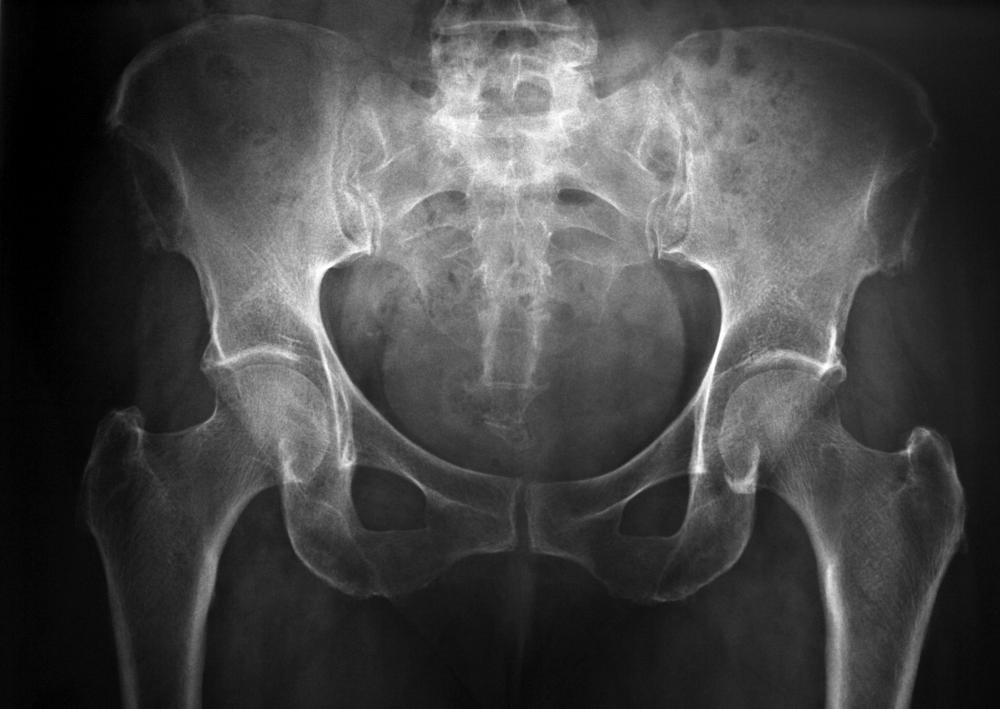At TheHealthBoard, we're committed to delivering accurate, trustworthy information. Our expert-authored content is rigorously fact-checked and sourced from credible authorities. Discover how we uphold the highest standards in providing you with reliable knowledge.
What Is the Risser Sign?
The Risser sign is an assessment of the development a patient's upper pelvic bone, known as the iliac crest, to determine how much more spinal growth the is expected. This can be important for the evaluation of patients with scoliosis. A patient with a score that indicates much more spinal development is on the way may need more aggressive interventions to prevent curvature. If a patient's spine is mostly mature, however, the degree of curvature should not increase.
While it is possible to make a rough guess about a patient's spinal development on the basis of age, the Risser sign provides a definitive measure. The doctor will need to take an x-ray of the patient's pelvis to look at the iliac crest and accompanying iliac apophysis, the growth plate that provides room to grow. Maturation of the iliac crest starts with ossification, or bone formation, at the outside edge. Over time, it works in toward the spine, and allows the iliac apophysis to fuse completely with the iliac crest.

The doctor can assign a score of one through five to a patient. A low score indicates lower maturity, which means the spine still has more room to grow, and there is an increased risk of additional curvature in a patient with scoliosis. Higher scores indicate more maturity and less of a risk of curvature because the patient's spine is almost, or completely, developed. A one indicates 25% ossification, a two 50%, a three 75%, and a 4 100%, while a five means that patient's ossification is complete and the fusing process is also done.

In evaluations of patients to determine if they have early signs of scoliosis or are at risk of developing it, doctors can perform a physical examination and may request x-rays of the pubic bones if a Risser sign would be helpful. This information goes into a patient chart and helps a doctor make treatment recommendations. For patients who are starting to show spinal curvature, a low score on the Risser sign can be a cause for concern, because it means the spine may get much worse.
Options to manage scoliosis can include bracing, surgery, and physical therapy. The best treatment can depend on the nature and degree of curvature as well as the Risser sign. One issue with scoliosis treatment is the need for patients to adhere to sometimes grueling, frustrating regimens, at times resulting in an increase in curvature.
AS FEATURED ON:
AS FEATURED ON:












Discuss this Article
Post your comments